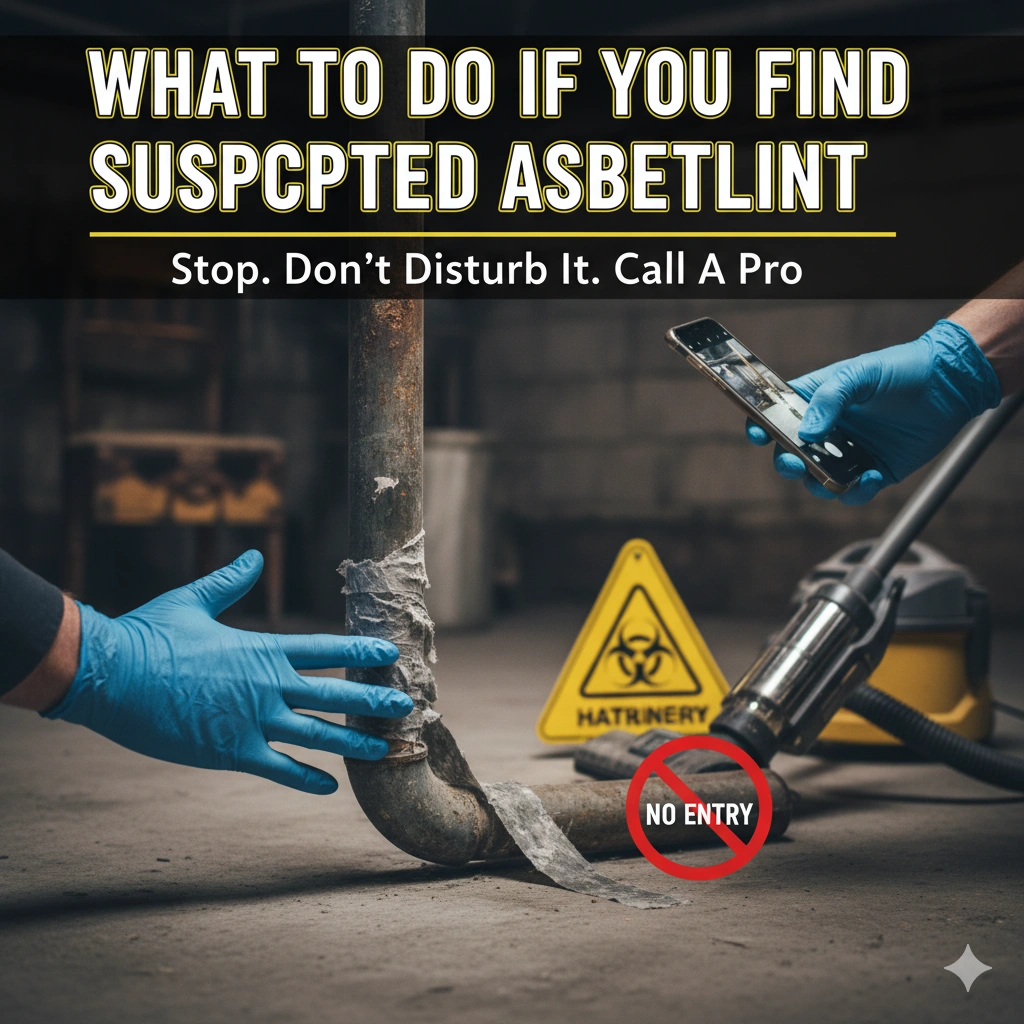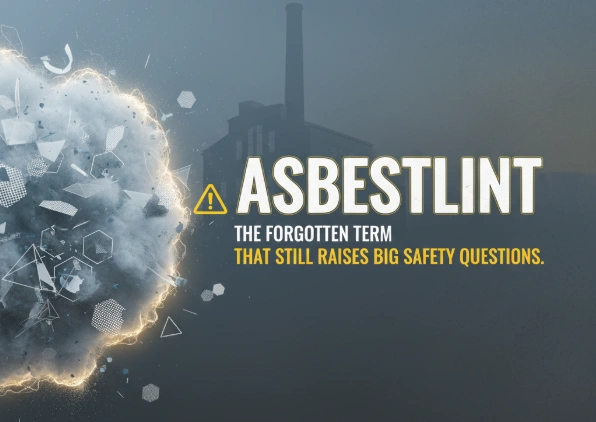Asbestlint: The Forgotten Term That Still Raises Big Safety Questions
Have you ever come across the word asbestlint and thought it was some kind of special building material? Maybe you saw it in an old construction manual, a foreign-language article, or even on a DIY renovation forum. It sounds technical, almost like a brand name, but here’s the reality: asbestlint isn’t a new invention or a rare type of asbestos—it’s simply a word that slipped into English through translation. And while the name may sound obscure, the dangers behind it are very real.
So, let’s clear up the confusion. What exactly is asbestlint, why do people still mention it, and more importantly, what should you do if you ever find it in your home or workplace?
Breaking Down the Mystery of the Word
The clue is in the name itself. In Dutch, German, and a few Scandinavian languages, asbest means asbestos. The second part, lint, can mean rope, tape, string, or even wick, depending on the context. When you put them together, asbestlint simply refers to asbestos rope or asbestos tape. No secret material, no hidden history—it’s asbestos in a form that was once incredibly common in construction and industry.
This makes sense when you think about how widely asbestos was used in the 20th century. Back then, asbestos was the superstar of building materials. It resisted heat like nothing else, it didn’t burn, it didn’t conduct electricity, and it could even withstand chemical corrosion. That made it perfect for weaving into ropes, braids, and tapes that could handle high temperatures or seal off dangerous gaps.
Where You Would Have Found Asbestlint
If you walked into a factory or even a typical home built before the 1980s, chances are you would have encountered asbestos in some form. But asbestlint—rope or tape made with asbestos fibers—was especially common in a few key places. Pipes wrapped in thick white or gray tape to keep the heat in? That’s asbestos tape. Furnaces and boilers lined with woven rope to prevent heat loss or fire hazards? That’s asbestos rope. Electricians using fireproof tape around wires and switches? Once again, asbestos did the job. Even plumbers relied on it, stuffing asbestos rope into threaded pipe joints to create seals that could handle boiling water or steam without breaking down.
At the time, it seemed like a miracle solution. Imagine being able to insulate a boiler or furnace with material that would never melt, never catch fire, and never rot. It saved money, improved energy efficiency, and kept equipment safe. . No wonder entire industries relied on it—much like how modern businesses are discovering new tools to optimize performance, as explained in Siozini’s Guide
Why This “Miracle Material” Turned Deadly
Here’s the part that wasn’t widely known when asbestos was at its peak: those strong little fibers that made asbestos so useful are also what make it deadly. Asbestlint might have been tough and reliable, but once it started to wear out or fray, it released microscopic fibers into the air. These fibers are so small you can’t see them, but they can stay suspended in the air for hours. And once you breathe them in, they can lodge deep in your lungs and stay there for decades.
The health risks connected to asbestos exposure are devastating. People who worked around asbestos often didn’t get sick right away. In fact, the diseases caused by asbestos usually take decades to develop, which is why so many cases only came to light years after the heavy use of the material had ended. Among the most common conditions are asbestosis, a serious lung disease that causes permanent scarring; lung cancer, which is especially aggressive in people who also smoked; and mesothelioma, a rare cancer that attacks the lining of the lungs or abdomen and is almost always linked to asbestos exposure.
That’s why asbestlint, despite sounding like an old and harmless term, still matters today. If you stumble across asbestos tape or rope in your home, the risk of exposure is just as real as if you found asbestos insulation or tiles.
What To Do If You Find Suspected Asbestlint

Picture this: you’re renovating your basement, and you spot an old, grayish tape wrapped around the hot water pipes. Or maybe you’re looking at an antique stove and notice a rope-like seal around the door. Your first instinct might be to pull it out or clean it up. Stop right there. Disturbing asbestos is the worst thing you can do.
Here are some key steps to keep in mind: first, never try to cut, scrape, or tear the material. That’s when fibers are most likely to get into the air. Second, don’t use your regular household vacuum to clean up dust near it. Normal vacuums don’t have the filters to trap asbestos fibers, and they’ll just blow the particles back into the room. Third, assume that anything that looks like old asbestos tape or rope probably contains asbestos until proven otherwise.
The safest move is to call in a licensed asbestos professional. These experts are trained to take samples safely, send them to a lab for testing, and then either remove the material or seal it in place following strict safety procedures. It may feel inconvenient or expensive, but it’s nothing compared to the health risks of doing it yourself.
Why Awareness Still Matters Today
You might be thinking, “But wasn’t asbestos banned years ago?” In many countries, yes. Its use has been restricted or banned outright since the 1980s. But the problem is that asbestos products, including asbestlint, were already installed in millions of homes, schools, factories, and public buildings. That means the legacy is still all around us. A house built in 1965, for example, could easily have asbestos rope in the furnace or asbestos tape on the ductwork. Even old appliances sometimes contain asbestos seals.
And because these materials often sit untouched for decades, people can go years without realizing they’re living with asbestos. The real danger comes during renovations, demolitions, or even basic repairs when old materials get disturbed. That’s why understanding what asbestlint means isn’t just about translation—it’s about recognizing a potential hazard before it becomes a health crisis.
Lessons From History
One of the most striking things about asbestos is how long it took for people to understand the risks. There were warnings about its health effects as early as the 1930s, but industries continued to use it because it was cheap, effective, and profitable. Workers in shipyards, factories, and construction sites were exposed daily without proper protection. Fast-forward to today, and entire generations are still suffering the consequences.
When we talk about asbestlint, we’re reminded not just of a strange word but of a chapter in industrial history that continues to affect us. It’s a lesson about questioning what seems “too good to be true” and about making health and safety a priority even when short-term convenience is tempting.
Conclusion
So, what is asbestlint? In the simplest terms, it’s just asbestos rope or tape by another name. But understanding it means more than solving a linguistic puzzle. It’s about recognizing how asbestos was used, why it’s so dangerous, and what to do if you come across it today.
If you ever find suspicious old rope or tape in your home, don’t brush it off as harmless. Don’t try to deal with it on your own. Treat it with caution and call professionals who know how to handle it safely. That small step could protect your health and your family’s for years to come.
Asbestlint may be an old-fashioned word, but the dangers tied to it are anything but outdated. The legacy of asbestos is still with us, and staying informed is the best way to keep safe.
FAQs
Q1: What is asbestlint?
Asbestlint is not a new product. It’s a foreign-language term that translates to asbestos rope or asbestos tape, both once widely used in construction and insulation.
Q2: Where was asbestlint commonly used?
It was often used around boilers, furnaces, pipes, ovens, and even in electrical systems as a fireproof seal, gasket, or insulation.
Q3: Why is asbestlint dangerous?
Like all asbestos materials, asbestlint can release microscopic fibers when damaged or disturbed. Breathing these fibers may cause lung cancer, asbestosis, or mesothelioma.
Q4: How can I tell if my home has asbestlint?
If your property was built before the 1980s, you may find old rope or tape around heating systems or pipes. Only a licensed asbestos professional can confirm it safely.
Q5: What should I do if I find suspected asbestlint?
Never cut, touch, or vacuum it. Disturbing asbestos is dangerous. Contact a certified asbestos abatement specialist for testing and safe removal.







